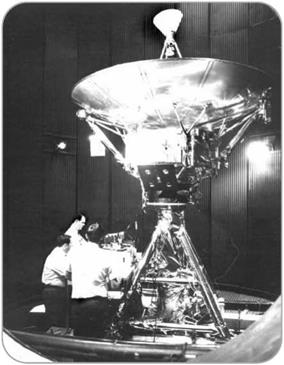Leaving Earth
Most probes are launched by a multistage rocket from the ground. There are three ways to send spacecraft into space using a rocket: sounding trajectory, Earth orbit, and Earth escape.
Sounding rockets were often fired into space during the 1940s and 1950s and are still used today. A sounding rocket can be fired to an altitude of about 100 miles (160 kilometers), at a
HIGH-SPEED LAUNCH
The fastest space launches have all involved space probes. In 1972 NASA’s Pioneer 10 was launched toward Jupiter at 32,400 miles per hour (52,130 kilometers per hour). In 1990, the probe Ulysses, on a mission to study the Sun, reached 34,450 miles per hour (55,430 kilometers per hour) during launch. New Horizons, launched in 2006 toward Pluto, was boosted to 35,800 miles per hour (57,600 kilometers per hour), as it left Earth’s orbit for deep space.
|
О Pioneer 10, launched in 1972, was the first spacecraft to fly through the asteroid belt that lies between Mars and Jupiter, into the outer regions of the solar system. |
О A NASA sounding rocket is fired in 1988. Sounding rockets only reach the fringes of space, but they offer an inexpensive way of gathering data.
maximum speed of about 5,000 miles per hour (8,050 kilometers per hour). After its engine burns out, the rocket begins its descent back to Earth. Scientific instruments in the nose of the sounding rocket send information to the ground by telemetry (radio) or may be retrieved by parachute.
To enter Earth orbit, a rocket trajectory must be at an angle so that it flies parallel to Earth’s surface. When its booster motors cut out, the topmost stage of the rocket must be going fast enough to enter orbit and not fall back to the ground under the pull of Earth’s gravity.
To escape completely from Earth’s gravity and become a planetary probe, a spacecraft must reach a velocity of around 25,000 miles per hour (40,200 kilometers per hour). It will then fly away from Earth, gradually slowing down. It may go into orbit around the Sun, or it may be attracted by the gravitational pull of a planet, such as Mars or Jupiter.











